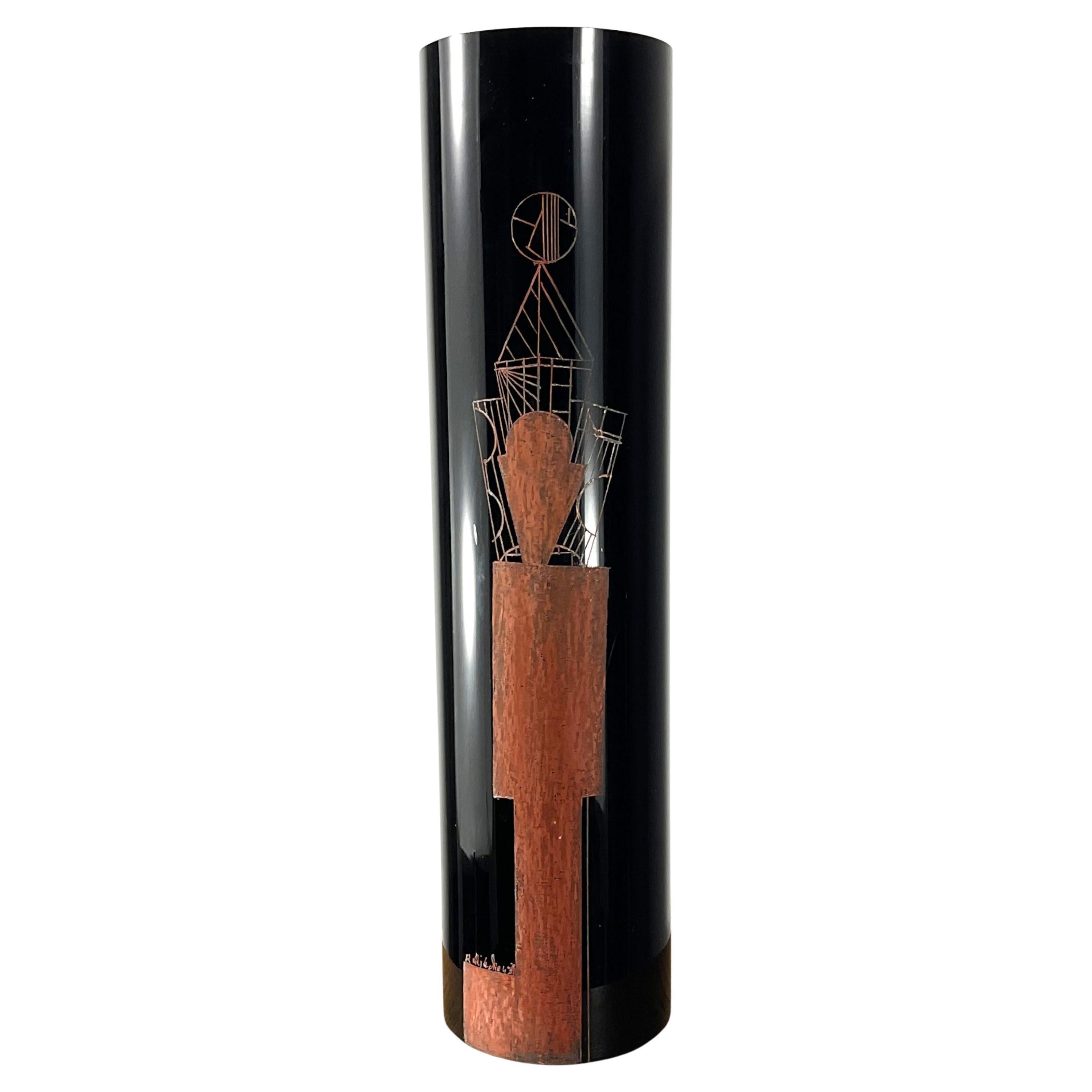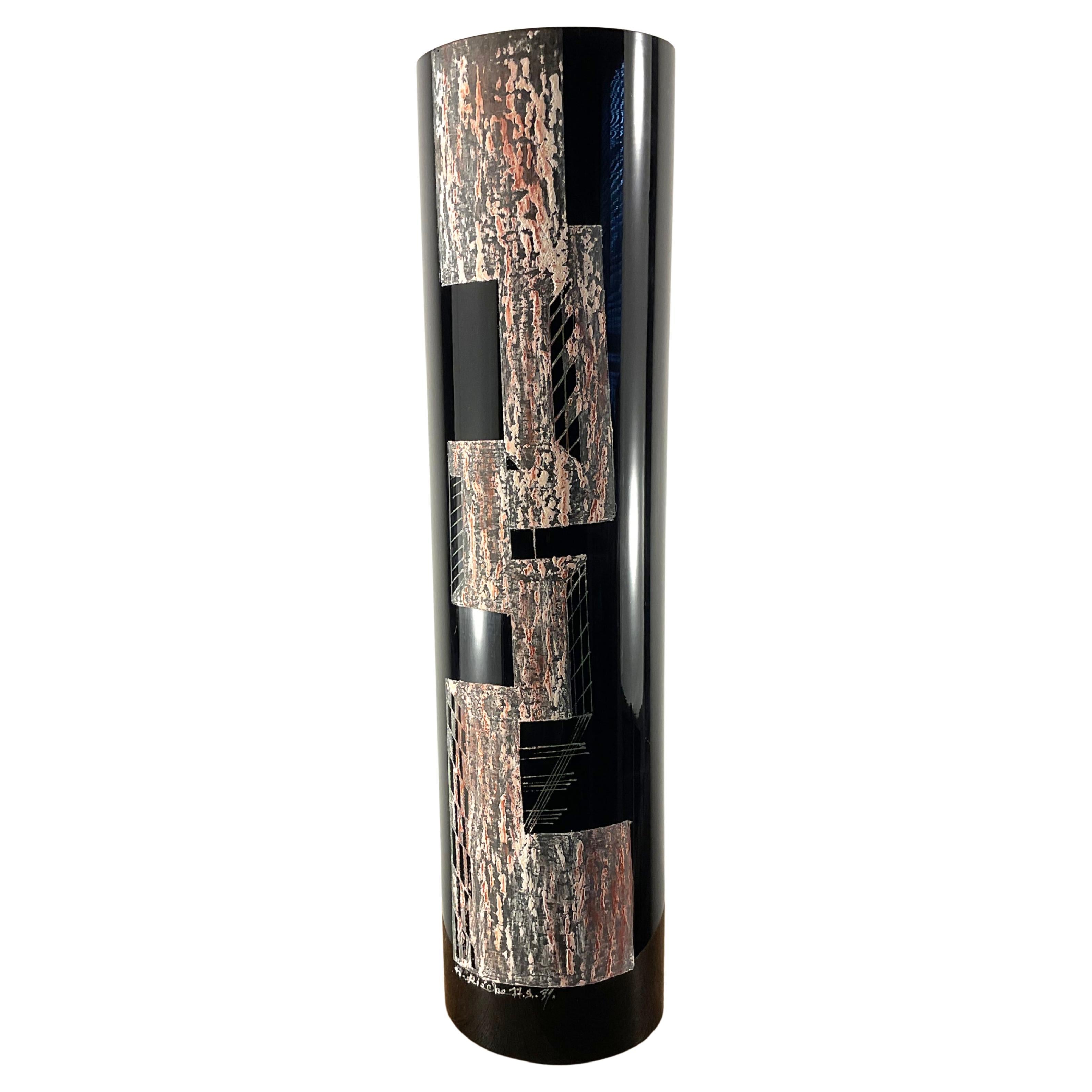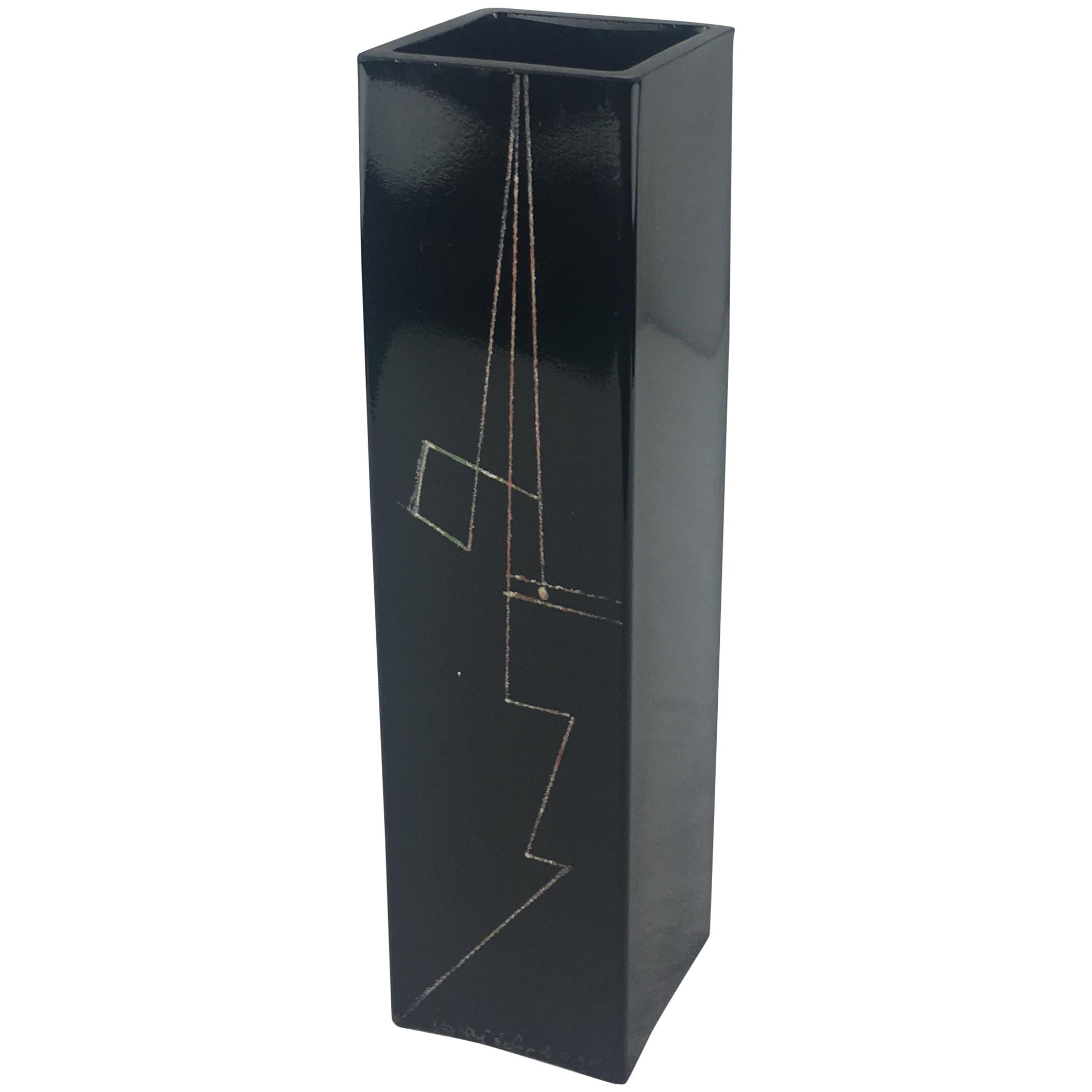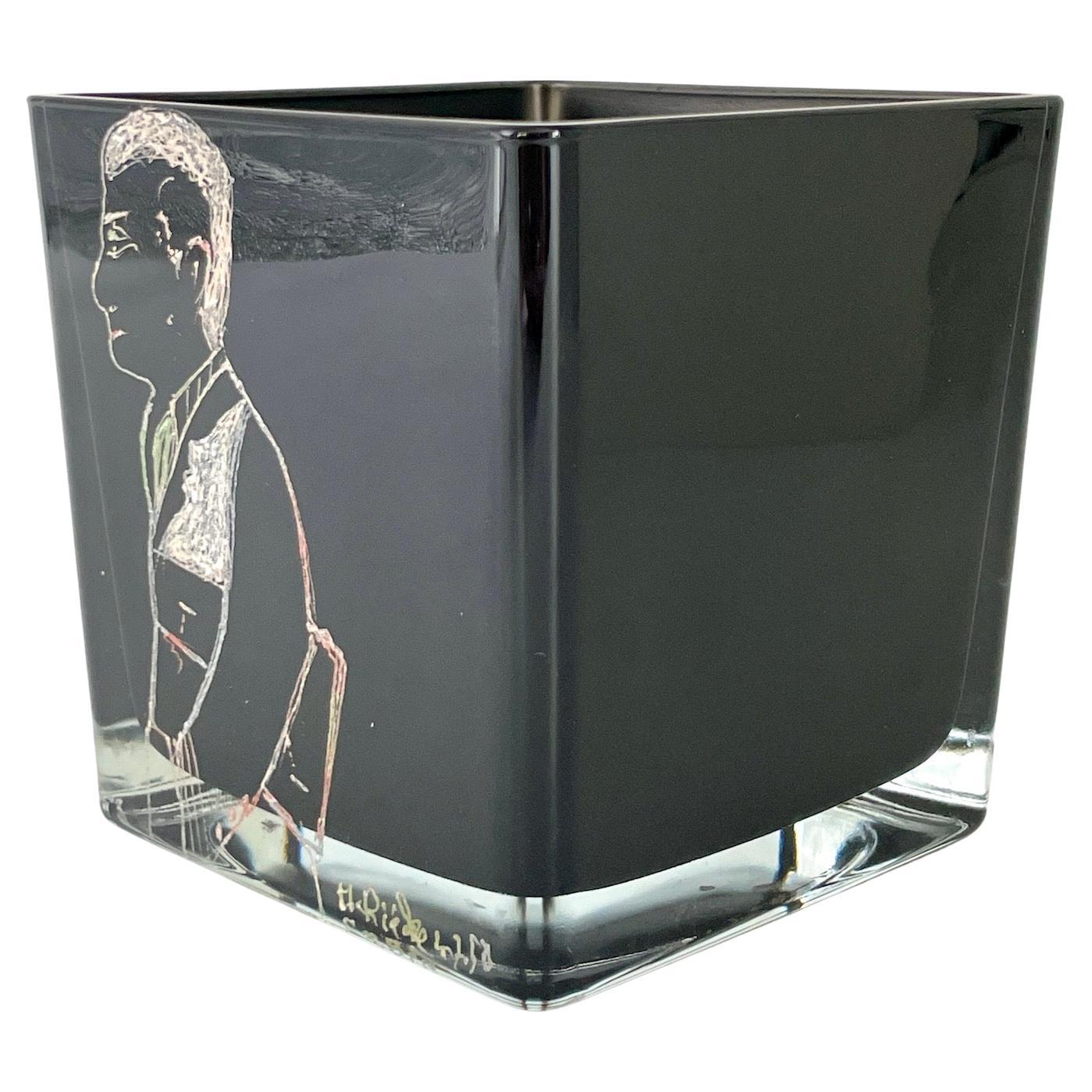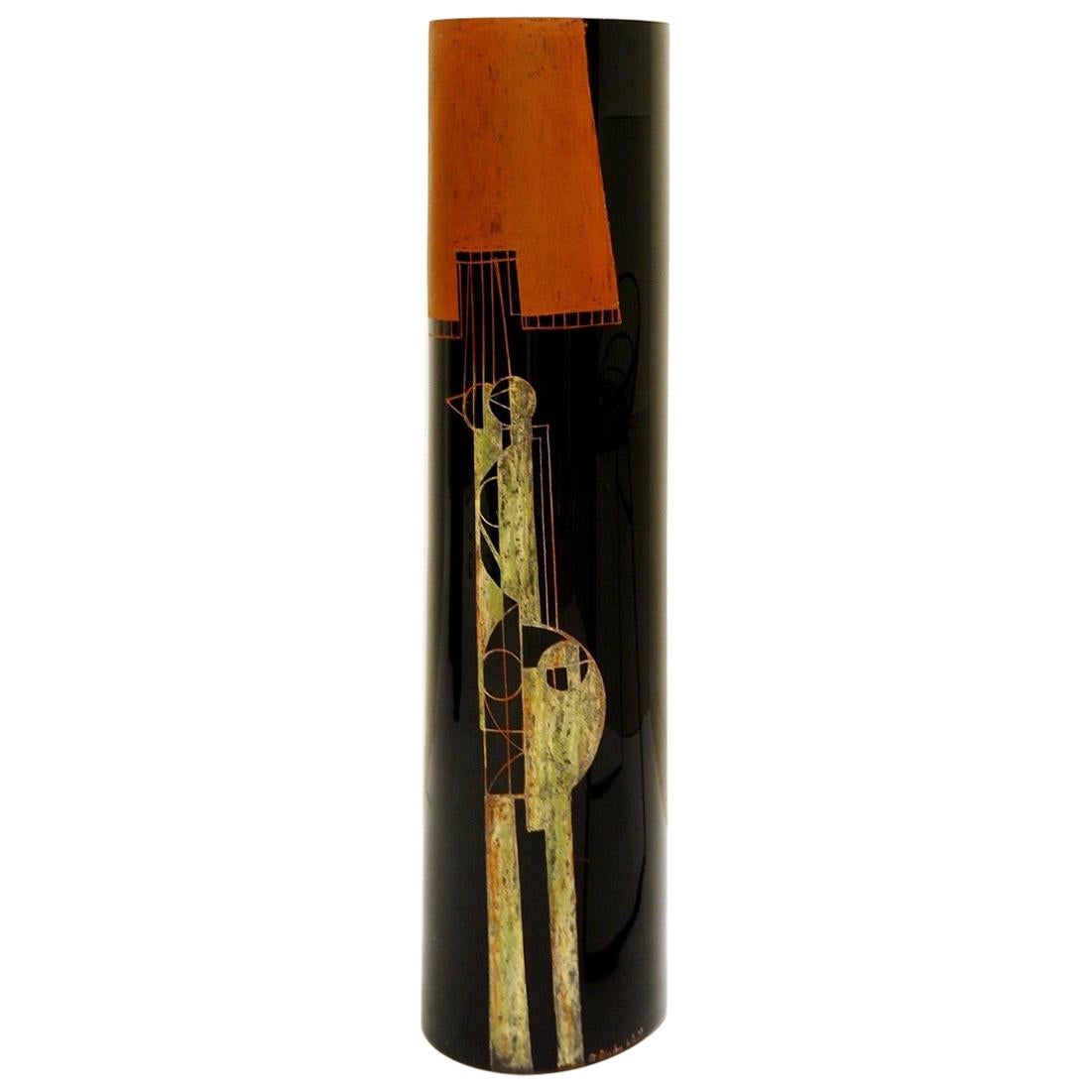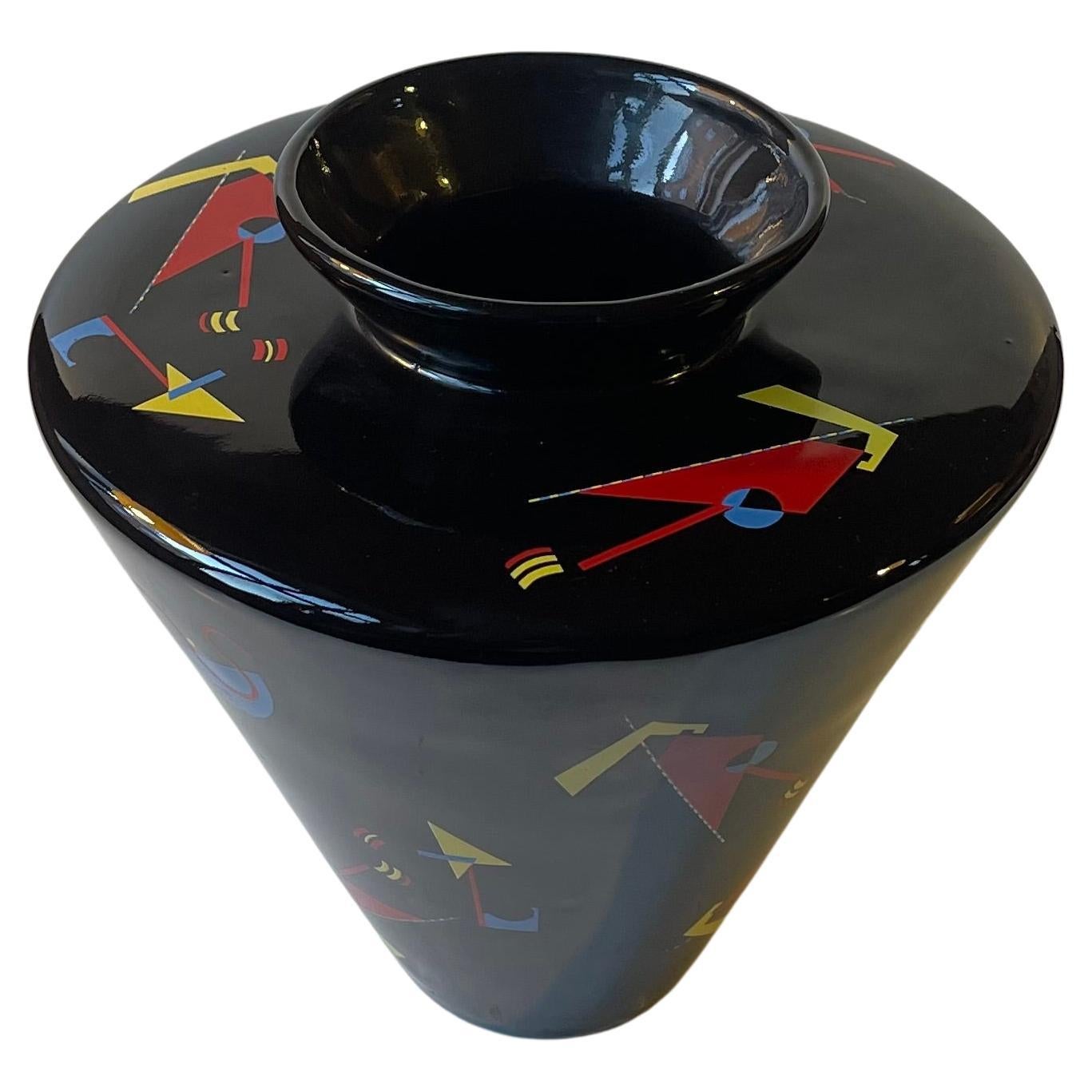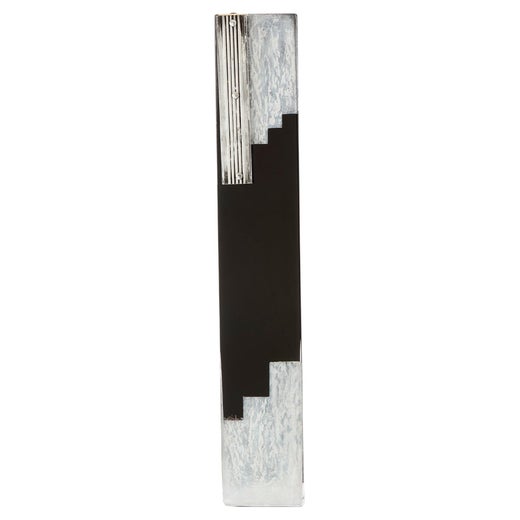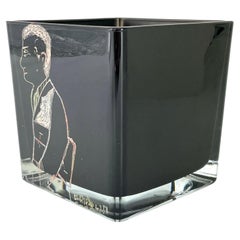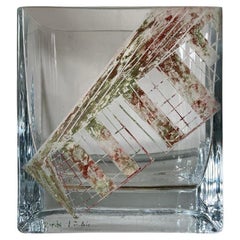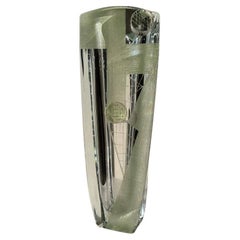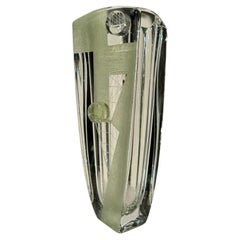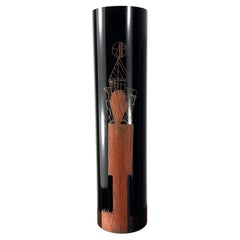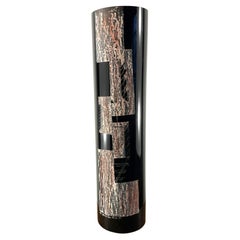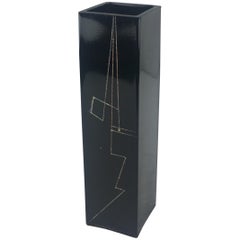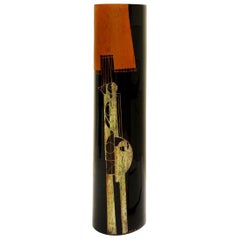Items Similar to Black Opaline Cubist Vase By Anatole RIECKE, 1959, Abstract Angel
Want more images or videos?
Request additional images or videos from the seller
1 of 10
Black Opaline Cubist Vase By Anatole RIECKE, 1959, Abstract Angel
$580.82
$829.7430% Off
£434.99
£621.4130% Off
€490
€70030% Off
CA$814.16
CA$1,163.0930% Off
A$897.02
A$1,281.4530% Off
CHF 464.35
CHF 663.3630% Off
MX$10,800.30
MX$15,429.0130% Off
NOK 5,879.79
NOK 8,399.7030% Off
SEK 5,523.69
SEK 7,890.9930% Off
DKK 3,731.64
DKK 5,330.9130% Off
About the Item
Black Opaline Cubist Vase by Anatole RIECKE, 1959, Abstract Angel, La Coupole Paris
This vase is a creation of the artist of Russian origin who lived in Paris at the beginning of the 20th century. Riecke participated in the decoration of the famous Parisian restaurant “La Coupole”, symbol of Art Deco architecture, and where all the personalities of the artistic world met.
This cubic vase in black opaline, is decorated on one side with an abstract motif that could be interpreted as an angel. The decoration is done with natural pigments.
Signed and dated, marked La Coupole under the base.
A. Riecke
A. Riecke was a very talented cubist artist who lived and worked in Paris in the early 20th century. His name and date are etched in the glass as part of the decorative detail. Riecke was responsible for the Art Deco glass decor of the restaurant La Coupole.
About the Seller
5.0
Vetted Professional Seller
Every seller passes strict standards for authenticity and reliability
Established in 2011
1stDibs seller since 2022
11 sales on 1stDibs
- ShippingRetrieving quote...Shipping from: Crespières, France
- Return Policy
Authenticity Guarantee
In the unlikely event there’s an issue with an item’s authenticity, contact us within 1 year for a full refund. DetailsMoney-Back Guarantee
If your item is not as described, is damaged in transit, or does not arrive, contact us within 7 days for a full refund. Details24-Hour Cancellation
You have a 24-hour grace period in which to reconsider your purchase, with no questions asked.Vetted Professional Sellers
Our world-class sellers must adhere to strict standards for service and quality, maintaining the integrity of our listings.Price-Match Guarantee
If you find that a seller listed the same item for a lower price elsewhere, we’ll match it.Trusted Global Delivery
Our best-in-class carrier network provides specialized shipping options worldwide, including custom delivery.More From This Seller
View AllCubic Vase by Anatole Riecke for La Coupole, Representing Jean Gabin, 1958
By A. Riecke
Located in Crespières, FR
Cubic Vase by Anatole Riecke for La Coupole, representing Jean Gabin, 1958
Vase by Anatole Riecke, Cubic, in black opaline, representing Jean Gabin, ...
Category
Vintage 1950s French Mid-Century Modern Vases
Materials
Glass, Art Glass, Opaline Glass
Crystal Vase by Anatole Riecke, Mid Century, La Coupole Restaurant Paris
By A. Riecke
Located in Crespières, FR
French Crystal vase by Anatole Riecke – 1944, La Coupole Restaurant, Paris.
This vase is a creation of the artist Anatole Riecke, of Russian origin, who lived in Paris at the beginn...
Category
Mid-20th Century French Art Deco Vases
Materials
Crystal
Crystal Vase by Anatole Riecke Abstract and Cubist Decor La Coupole Restaurant
By A. Riecke
Located in Crespières, FR
French Crystal vase by Anatole Riecke Decorator of the restaurant La Coupole, Montparnasse Paris. This vase as an Abstract and Cubist Decor created with relief on a twisted crystal v...
Category
Mid-20th Century French Art Deco Vases
Materials
Crystal
1950’s French Crystal Vase By Anatole Riecke Transparent And Green
By A. Riecke
Located in Crespières, FR
French Crystal vase by Anatole Riecke – 1950's – white black and silver
This vase is a creation of the artist Anatole Riecke, of Russian origin, who lived in Paris at the beginning ...
Category
Vintage 1950s French Modern Vases
Materials
Crystal
Glass Base Kandem 1115 Table Lamp By Marianne Brandt Circa Late 1930’s
By Marianne Brandt
Located in Crespières, FR
1930’s Glass Base Kandem 1115 Table Lamp by Marianne Brandt for Kandem Germany (Körting & Mathiesen AG, Leipzig)
Iconic Kandem Bauhaus table or desk lamp by Marianne Brandt.
This a...
Category
Vintage 1930s German Mid-Century Modern Table Lamps
Materials
Iron
Crystal Val Saint Lambert Round Dish Hand Painted 24 carat Gold Mat Finish x3
By Val Saint Lambert
Located in Crespières, FR
Crystal tableware by the ever famous Val Saint Lambert Cristalleries since 1826.
Very elegant transparent dish to serve vegetables fruits or desserts or use for table decoration with...
Category
Mid-20th Century Belgian Mid-Century Modern Crystal Serveware
Materials
Crystal, Gold Plate
You May Also Like
1930s Vase Engraved By Anatole Riecke in Black Opaline with a Red Cubist Figure
By A. Riecke
Located in London, GB
This vase was designed by Anatole Riecke, a Russian glass artist renowned for his role in the Parisian Art Deco movement. Based in Paris, Riecke became particularly known for his dec...
Category
Vintage 1930s French Art Deco Vases
Materials
Opaline Glass
1930s Vase Engraved by Anatole Riecke with Cubist Designed
By A. Riecke
Located in London, GB
This vase was designed by Anatole Riecke, a Russian glass artist renowned for his role in the Parisian Art Deco movement. Based in Paris, Riecke became particularly known for his dec...
Category
Vintage 1930s French Art Deco Vases
Materials
Opaline Glass
Art Deco Cubist Vase signed Anatole Riecke from La Coupole Paris France
By A. Riecke
Located in Miami, FL
A small distinctive vase, fashioned with period cubism etched designs. This is another of our collection of pieces that were once used at, and perhaps sold, through the legendary La Coupole...
Category
20th Century French Art Deco Vases
Materials
Porcelain
A. Riecke Cylindrical Vase in Black Engraved Glass Signed and Dated 20th Century
By A. Riecke
Located in Brussels, BE
A. Riecke cylindrical vase in black engraved glass signed and dated 20th century.
Category
Vintage 1950s European Mid-Century Modern Vases
Materials
Glass
Abstract Expressionist Black Porcelain Vase in the style of Wassily Kardinsky
By (after) Wassily Kandinsky
Located in Esbjerg, DK
Exceptional spinner-shaped vase in glazed black porcelain. It features colorful geometric expression very much so in the style of the Godfather of Abstract epressionism Wassily Kardi...
Category
Vintage 1950s European Bauhaus Vases
Materials
Porcelain
$706 Sale Price
20% Off
Free Shipping
Anatole Riecke Art Deco tall black opaline glass red vase 1939
By A. Riecke
Located in Paris, IDF
This tall Art Deco vase in black opaline glass, with engraved details, red painted decor, and chromed steel pieces add-ons, is signed by the Russian artist Anatole Riecke, and dated ...
Category
Vintage 1930s French Art Deco Vases
Materials
Opaline Glass
More Ways To Browse
Angel Art Deco
La Coupole
Angel Vase
Anatole Riecke
Vintage Cut Glass Vases
Vintage Green And Black Pottery
18th Century Dutch Vases
1930s Decor
3d Printed Furniture
Ancient Greek Pottery
Baccarat Vase Ormolu
Bay West German Vase
Blue Hand Cut Crystal
Cartoccio Vase
Chinese Floor Vase
Chinese Vase With Dragons
Cloisonne Bronze French
Copper And Turquoise
